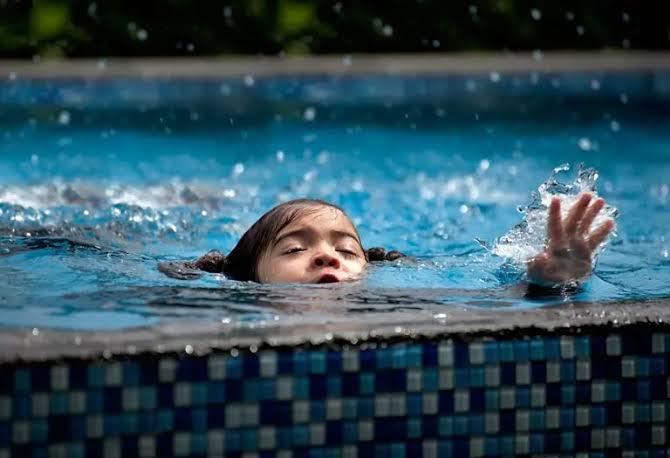താപനില ഉയരുകയും കുടുംബങ്ങൾ വെള്ളവുമായി ബന്ധപ്പെട്ട വിനോദത്തിനായി പുറത്തേക്ക് പോകുകയും ചെയ്യുമ്പോൾ, ആരോഗ്യ ഉദ്യോഗസ്ഥർ പലപ്പോഴും അവഗണിക്കപ്പെടുന്ന മുങ്ങിമരണ അപകടത്തെക്കുറിച്ച് മുന്നറിയിപ്പ് നൽകുന്നു, പ്രത്യേകിച്ച് കുട്ടികൾക്കിടയിൽ.
യുഎസിൽ ഓരോ വർഷവും ഏകദേശം 4,000 പേർ ആകസ്മികമായി മുങ്ങിമരിക്കുന്നതായി സെന്റർസ് ഫോർ ഡിസീസ് കൺട്രോൾ ആൻഡ് പ്രിവൻഷൻ (സിഡിസി) യുടെ ഡാറ്റ വെളിപ്പെടുത്തുന്നു. കുട്ടികളെ സംബന്ധിച്ചിടത്തോളം, കാർ അപകടങ്ങൾക്ക് തൊട്ടുപിന്നാലെ, അബദ്ധത്തിൽ മരിക്കാനുള്ള രണ്ടാമത്തെ ഏറ്റവും സാധാരണമായ കാരണമാണിത്. കുട്ടികൾ ഉൾപ്പെടുന്ന ഈ ദാരുണമായ സംഭവങ്ങളിൽ ഭൂരിഭാഗവും വീട്ടിലോ താമസ സ്ഥലങ്ങളിലോ നടക്കുന്നുണ്ടെന്ന് ഉപഭോക്തൃ ഉൽപ്പന്ന സുരക്ഷാ കമ്മീഷൻ (സിപിഎസ്സി) നടത്തിയ ഒരു പഠനത്തിൽ കണ്ടെത്തി.
“മുങ്ങിമരണം സാധാരണയായി വേഗത്തിലും നിശബ്ദമായും സംഭവിക്കും,” സിഎൻഎന്നുമായുള്ള സംഭാഷണത്തിൽ എമർജൻസി മെഡിസിൻ ഫിസിഷ്യനായ ഡോ. ലിയാന വെൻ മുന്നറിയിപ്പ് നൽകി. “കൊച്ചുകുട്ടികൾക്ക് ഏതാനും ഇഞ്ച് വെള്ളത്തിൽ മുങ്ങിമരിക്കാൻ കഴിയും, മരണത്തിന് ഏകദേശം 30 സെക്കൻഡ് മാത്രമേ എടുക്കൂ.”
പ്രധാന അപകടസാധ്യതകളിലൊന്ന് അപര്യാപ്തമായ മേൽനോട്ടമാണെന്ന് ഡോ. വെൻ ചൂണ്ടിക്കാട്ടി. “മുതിർന്നവരോ മുതിർന്ന കുട്ടികളോ സമീപത്തുണ്ടെങ്കിൽ പോലും, അവർ പലപ്പോഴും പൂർണ്ണ ശ്രദ്ധ ചെലുത്തുന്നില്ല,” അവർ വിശദീകരിച്ചു. “ചിലർക്ക് സ്വയം നീന്താൻ കഴിഞ്ഞേക്കില്ല, പലരും കരുതുന്നത് പിൻമുറ്റത്തെ ഒരു ചെറിയ കുളം അല്ലെങ്കിൽ ഒന്നിലധികം ആളുകളുടെ സാന്നിധ്യം സാഹചര്യം സുരക്ഷിതമാക്കുമെന്നാണ് – ഇത് എല്ലായ്പ്പോഴും ശരിയല്ല.”
മുങ്ങിമരിക്കാനുള്ള സാധ്യത കുറയ്ക്കുന്നതിന്, സിഡിസിയും ജലസുരക്ഷാ വക്താക്കളും ഇനിപ്പറയുന്നവ ശുപാർശ ചെയ്യുന്നു:
• നീന്തൽ വൈദഗ്ദ്ധ്യം, ഫ്ലോട്ടേഷൻ ഉപകരണങ്ങളുടെ ഉപയോഗം, വെള്ളത്തിന്റെ ആഴം എന്നിവ കണക്കിലെടുക്കാതെ കുട്ടികളെ ഒരിക്കലും വെള്ളത്തിനടുത്ത് വെറുതെ വിടരുത്.
• മേൽനോട്ടം വഹിക്കുന്ന മുതിർന്നവർ എല്ലായ്പ്പോഴും കുട്ടികളിൽ ശ്രദ്ധ കേന്ദ്രീകരിക്കണം, ഫോണുകൾ അല്ലെങ്കിൽ വായനാ സാമഗ്രികൾ പോലുള്ള ശ്രദ്ധ വ്യതിചലിപ്പിക്കുന്നത് ഒഴിവാക്കണം.
• അടിയന്തര ഘട്ടങ്ങളിൽ ഫലപ്രദമായി പ്രതികരിക്കുന്നതിന്, പ്രത്യേകിച്ച് കുട്ടികൾക്കും ശിശുക്കൾക്കും CPR, അടിസ്ഥാന പ്രഥമശുശ്രൂഷ എന്നിവ പഠിക്കുക.
• ബോട്ടിംഗ് നടത്തുമ്പോൾ എല്ലായ്പ്പോഴും കോസ്റ്റ് ഗാർഡ് അംഗീകരിച്ച ലൈഫ് ജാക്കറ്റ് ധരിക്കുക. 2022-ൽ, ബോട്ടിംഗ് നടത്തുമ്പോൾ മുങ്ങിമരിച്ചവരിൽ 85% പേരും അത് ധരിച്ചിരുന്നില്ല.
• ലൈഫ് ഗാർഡുകൾ നിരീക്ഷിക്കുന്ന നീന്തൽ മേഖലകളിൽ തുടരുക, എല്ലാ സുരക്ഷാ നിർദ്ദേശങ്ങളും നിയുക്ത നീന്തൽ മേഖലകളും അനുസരിക്കുക.
• 1 മുതൽ 4 വയസ്സ് വരെ പ്രായമുള്ള കുട്ടികളെ നീന്തൽ പാഠങ്ങളിൽ ചേർക്കുന്നത് അവരുടെ മുങ്ങിമരിക്കാനുള്ള സാധ്യത 88% വരെ കുറയ്ക്കും.
• കുട്ടികളുമായി സുരക്ഷിതമായ ജലശീലങ്ങൾ ശക്തിപ്പെടുത്തുക: ഒറ്റയ്ക്ക് നീന്തരുത്, വെള്ളത്തിൽ ഇറങ്ങുന്നതിന് മുമ്പ് അനുവാദം ചോദിക്കുക, അജ്ഞാതമായ വെള്ളത്തിലേക്ക് ഒരിക്കലും തലകുത്തി മുങ്ങരുത്.
• കുട്ടികൾ കുളത്തിൽ നിന്ന് വസ്തുക്കൾ സ്വയം എടുക്കാൻ ശ്രമിക്കരുതെന്ന് ഓർമ്മിപ്പിക്കുക, കാരണം ഇത് അവർ അതിൽ വീഴാൻ ഇടയാക്കും – പകരം ഒരു മുതിർന്നയാളുടെ സഹായം തേടുക.
വെള്ളത്തിൽ കുട്ടികളെ നിരീക്ഷിക്കാൻ ഉത്തരവാദിത്തമുള്ള മുതിർന്നവർ നീന്തൽ പഠിക്കുകയും അടിസ്ഥാന ജല സുരക്ഷാ പ്രോട്ടോക്കോളുകൾ മനസ്സിലാക്കുകയും ചെയ്യണമെന്ന് ഡോ. വെൻ അഭിപ്രായപ്പെട്ടു, കാരണം അവരുടെ പ്രതികരിക്കാനുള്ള കഴിവ് നിർണായകമാണ്.
വേനൽക്കാല പ്രവർത്തനങ്ങൾ വർദ്ധിക്കുമ്പോൾ, അൽപ്പം ശ്രദ്ധയും സുരക്ഷാ പരിജ്ഞാനവും വലിയ മാറ്റമുണ്ടാക്കുമെന്നും ജീവൻ രക്ഷിക്കാൻ പോലും കഴിയുമെന്നും വിദഗ്ദ്ധർ ഊന്നിപ്പറയുന്നു.
Drowning Incidents Spike During Summer: Experts Stress Need for Caution Around Water
As temperatures rise and families head outdoors for water-related fun, health officials are sounding the alarm on the often-overlooked danger of drowning—especially among children.
Data from the Centers for Disease Control and Prevention (CDC) reveals that each year, approximately 4,000 people in the U.S. die from accidental drowning. For children, it ranks as the second most common cause of unintentional death, just after car crashes. A study conducted by the Consumer Product Safety Commission (CPSC) also found that most of these tragic incidents involving children take place at home or in residential settings.
“Drowning is usually quick and silent,” warned Dr. Leana Wen, an emergency medicine physician, in a conversation with CNN. “Young children can drown in just a few inches of water, and it only takes about 30 seconds for a fatal outcome.”
Dr. Wen pointed out that one of the key risks is inadequate supervision. “Even when adults or older kids are nearby, they’re often not paying full attention,” she explained. “Some may not be able to swim themselves, and many assume that a small backyard pool or the presence of multiple people makes the situation safe—which isn’t always true.”
To reduce the risk of drowning, the CDC and water safety advocates recommend the following:
- Never leave children unattended near any water, regardless of their swimming skills, use of floatation devices, or the water’s depth.
- Supervising adults should stay focused on the children at all times, avoiding distractions like phones or reading materials.
- Learn CPR and basic first aid, especially for children and infants, to respond effectively during emergencies.
- Always wear a U.S. Coast Guard–approved life jacket when boating. In 2022, 85% of those who drowned while boating were not wearing one.
- Stick to swimming areas that are monitored by lifeguards, and obey all safety instructions and designated swimming zones.
- Enroll children aged 1 to 4 in swimming lessons, which can reduce their risk of drowning by up to 88%.
- Reinforce safe water habits with children: don’t swim alone, ask for permission before entering the water, and never dive headfirst into unknown water.
- Remind kids not to try retrieving objects from the pool on their own, as this could lead to them falling in—ask an adult for help instead.
Dr. Wen also noted that adults who are responsible for watching kids in the water should learn how to swim and understand basic water safety protocols, as their ability to respond can be crucial.
As summer activities pick up, experts emphasize that a little attentiveness and safety know-how can make a major difference—and even save lives.












More Stories